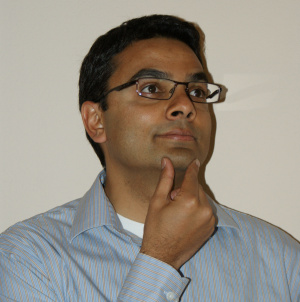Driving User Behavior with Game Dynamics and Behavioral Economics
 Rajat Paharia, Bunchball
Rajat Paharia, Bunchball
rajatSeminar on People, Computers,
and Design
Stanford University February 19, 2010, 12:50pm, Gates B01
Status, achievement, reward, competition, self-expression: by addressing these fundamental human needs and desires, designers can make experiences both compelling and satisfying. Game designers, in particular, have known for years how to incent and motivate players by addressing these needs through the use of mechanics like points, levels, leaderboards, virtual goods, challenges, and real-time feedback. We'll cover the migration of these mechanics out of the gaming world and into the world at large, including destination sites, devices, productivity applications, and corporate intranets. And then we'll cover how they can be used in conjunction with the principles of behavioral economics - the biases and shortcuts that human beings have in their decision-making processes, that cause them to make irrational, but predictable decisions. Concepts that will be covered include loss aversion, the decoy effect, anchoring, commitment & consistency, scarcity, reciprocity, social proof and more.
See the SLIDES FOR THE TALK
![]()
Rajat Paharia is the founder and Chief Product Officer of Bunchball. Rajat's skill set combines a unique understanding of technology and design that stems from a four year career at design firm IDEO where he was co-director of the Software Experiences Practice. While there he worked with clients including AT&T Wireless, Avaya, Microsoft, McDonald's, HP and Philips. Prior to IDEO, Rajat worked at Philips Consumer Electronics, IBM Research and ViewStar. He has a Masters degree in Computer Science from Stanford University, with a focus on Human Computer Interaction, and an undergraduate degree from the University of California Berkeley.
![]()
The talks are open to the public. They are in the Gates Building, Room B01 in the basement. The nearest public parking is in the structure at Campus Drive and Roth Way.
View this talk on line at CS547 on Stanford OnLine.
Titles and abstracts for previous years are available by year and by speaker.